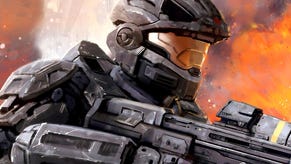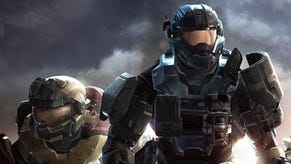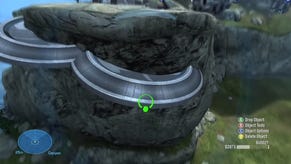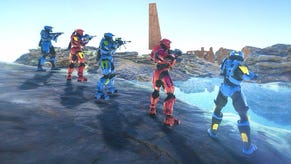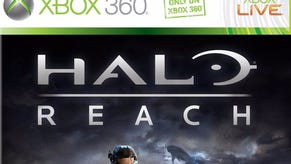Halo: Reach
Who's laughing now?
Forge, Halo's map-editing facility, first appeared in Halo 3. For Bungie's finale this becomes Forge World: in Jarrard's words, "exponentially larger than Sandbox" and - in a fitting gesture to fans - "based on a Halo ring itself", which will once again dominate the skybox.
And that's far from the only nod to the series' roots. Part of the custom map is a recreation of classic Combat Evolved multiplayer map, Blood Gulch. Now, of course, you are at liberty to rebuild as you see fit. Similarly, Halo 2's Sanctuary map has been reconstructed to the "exact same dimensions", as has Ascension, also from the second instalment.
Jarrard promises the editing tools are far more flexible and user-friendly than Halo 3's, which he describes as "a house of cards" - get one bit wrong and everything collapses. He then zooms out with the camera, high above Blood Gulch, to show the vast scale of the map, all of which is accessible, all of which can be built upon.
Five pre-designed Forge maps will be available out of the box. Beyond that, it's up to your imagination and credit haul, with cash exchanged for countless items and effects that will no doubt be added to extensively post-launch. The community, as Jarrard sees it, will "shape the future of the experience months and years after release".
Finally, Bungie's lead mission designer Niles Sankey seizes the controller and launches into the opening of the main campaign. A good chunk of the opening cinematic has already been released, as the player joins Noble Team on the planet's surface and quickly embarks on a mission to investigate a distress beacon.
If the myriad trailers haven't already convinced you, Halo: Reach is breathtakingly beautiful at times, its in-engine cut-scenes produced with cinematic flair, underpinned early on by the haunting restraint of Marty O'Donnell's masterful score.
I won't spoil the details of the set-pieces, but the verdant carpet of life rolled out across Reach is teeming with indigenous wildlife, most notably weird ostrich-like creatures which charge around in isolation or in groups.
You will also encounter a civilian population throughout the campaign. Its narrative purpose is to highlight the tragedy of Reach through their experiences as the story unfolds; but there's a wider impact on gameplay, too. The example we see is an abandoned civilian vehicle which Noble Team discovers and quickly adapts into a makeshift Warthog.
The mechanics of Halo, even viewed as a spectator, are now so back-of-hand familiar there's little concern over the core experience, which Bungie has refined now for the best part of a decade. Similarly, the multiplayer is a largely known quantity and nothing among the new features has to this point suggested they will do anything other than enrich and deepen that part of the experience.
But for many Halo fans, including myself, the Campaign is king. Bungie has explicitly and repeatedly linked the experience of Reach to that of the original and unforgettable Combat Evolved. Having delivered the strangely empty and incoherent ODST in the interim between Halo 3 and Reach, there's a palpable sense that, acutely aware this is its well-deserved but final encore, the team has pushed itself to include everything it has always wanted to.
Whether that approach has energised Bungie to produce another masterpiece, or tipped it towards nervous over-elaboration, we'll know for sure in a little over a month.
But if one thing's clear, it's that nobody's laughing at Bungie's cybernetic warriors now.



